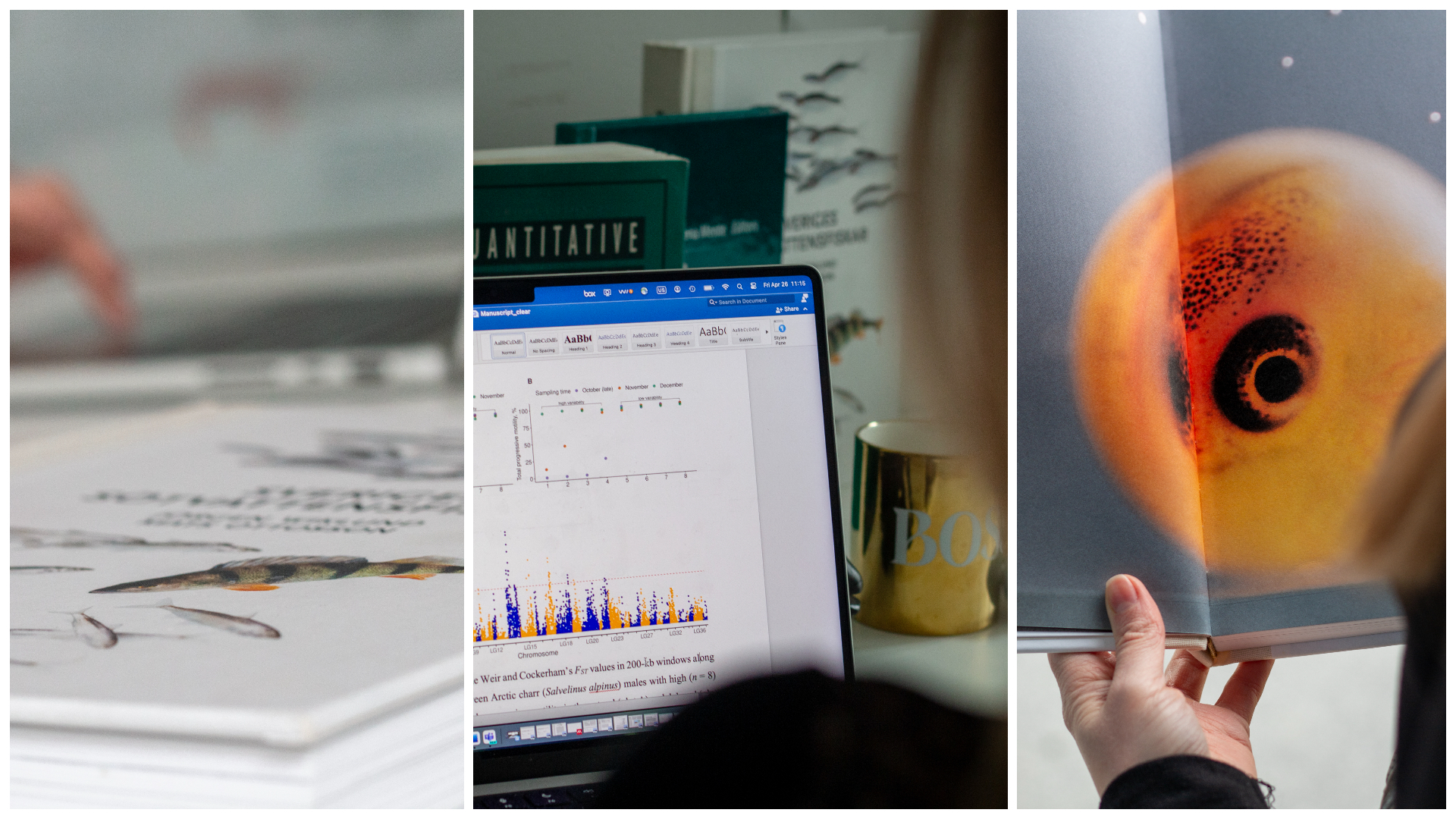Inside a Swedish fish farm
Imagine walking through the gates and being greeted by the following sight:
Fish tanks are of different sizes and shapes with different purposes: nursery, separated male and female fish, young and fully grown, and large fish. To the right is a huge oxygen tank; outside are ponds where fish grow bigger.
In a large fish farm, such as the Swedish VBCN, there are roughly 375,000 fish, ranging from larvae to 9-year-old adults of species like Arctic charr, rainbow trout, and brown trout. In such a large fish farm, the annual production can reach up to 30 tons of fish.
Many people also work diligently within the facility to maintain the fish's living environment and secure future generations. They monitor the oxygen level, temperature, and nutrient content in the water tanks. They collect roe from the females and milt from the males — and, after careful calculations, ensure that the right eggs and sperm are mixed to produce the next generation of fish.
But why go to all this trouble when fish can be naturally caught from our large lakes and seas? The answer is to be able to control breeding and select the best individuals with desirable traits using tools like selective breeding and AI.
The VBCN Research Station
Today, Arctic charr is a rare commodity in the food market. It is classified as a high-quality Swedish food fish that could be an important part of the Swedish diet. However, not today — its fertility is too low.
Arctic charr kept within aquaculture and fish farms tend to exhibit lower sperm quality than their wild counterparts, resulting in a reduced number of fertilized eggs and hatched embryos.
– This makes Arctic charr a rare food fish that almost no one can afford to buy. Instead, we import enormous quantities of foreign fish - but it doesn't have to be this way, the researcher states.
Since the late 1980s, Arctic charr has been the subject of a national breeding program and is still considered a key species in the Swedish aquaculture industry. However, the factors affecting sperm quality have not been investigated until today.
Over the next four years, the VBCN research station and a research group, which Khrystyna Kurta is a part of, are collaborating towards a common goal: to investigate the possibilities of improving reproduction in what could become the food fish of the future.

Multiple methods are being combined to execute the project aimed at improving the fertility of the Swedish Arctic charr — utilizing new, advanced technology and the opportunity to conduct the research project directly within a Swedish fish farm. Photo: Lisa Chröisty
AI, selective breeding, and new genetic methods
Khrystyna Kurta describes her job as "using multiple methods to identify the most fertile fish and ensuring that they are retained in breeding programs." How is this done? The answer is AI and selective breeding.
– Artificial insemination (AI) and selective breeding are keys to controlling the traits of future generations, including fish, she says.
So, it's about not allowing natural spawning (mating) to occur. Instead, gametes are collected from females and males — and fertilization is done artificially.
However, to form the next generation effectively, eggs and sperm must be carefully selected, which requires much knowledge about which traits should be prioritized.
The Big Question: Production versus Reproduction
The process of AI and selective breeding is well-established within fish farms. In this process, females and males are examined so that the most suitable ones are used for breeding. Notably, the assessment includes evaluating how "good" the fish are from a production perspective. However, measuring the fertility of fish is not currently on the agenda.
– Good production traits in other animal species can involve characteristics like high milk production (cows) or rapid growth (chickens). In fish, size is often valued. However, researchers have observed that animals selected for the BEST production traits may have the WORST reproductive performance in the future — ultimately leading to the extinction of these fantastic production traits simply because the animals are not fertile enough to create the next generation, says Khrystyna Kurta.
The researchers will evaluate Swedish-farmed Arctic charr males based on several parameters, such as age, genetics, and whether it matters when, during the fish spawning season, the sperm is collected. In addition, the research team is questioning whether sperm quality affects the offspring.
– We have reason to believe that sperm quality, how active and "fast" the sperm of Arctic charr males are, can affect both the survival and development of their offspring. If this is true, and if we can also identify genes (through a process called "sperm transcriptome/RNA analysis") that indicate fertility or infertility, we can predict the most fertile fish in the future and ensure a more sustainable fish population, the researcher continues.
Samples are collected and placed under a microscope to conduct these investigations. But there's a catch: the measurement must be quick. The researchers have only a 30-second window to study the sperm before they die. However, with the right techniques, that time is sufficient to extract all the information Khrystyna Kurta seeks.
Indeed, that might be all that's needed to advance the research.






